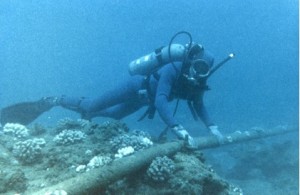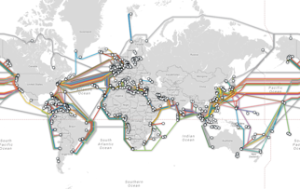Undersea Cable and Wires

Curious about what the Internet actually looks like? Believe it or not, similar to the photo above! Well, at least that’s how we are all connected for Internet access. Underwater wires and cable, sometimes called submarine communication cables, are primarily utilized to carry telecommunication signals across long stretches across the globe. They were first laid more than 150 years ago and were meant, at that time, to carry telegraphic signals!
They’ve come a long way since and today, submarine cables are made using optical fibers and carry digital information like telephone, Internet, as well as data. As of 2010, these cables link all continents in the world, excluding Antarctica. In addition to digital data traffic, underwater wires and cables are also used to transmit energy and other abstract materials. Offshore wind power can be carried from power plants to the mainland and other cables can connect gas and oil production plants to energy grids.

Currently, over 90% of the world’s telephone and Internet traffic is transported through intercontinental underwater cable networks. The world’s submarine cable infrastructures are continuously expanding and are still vital, even with the existence of satellites. Cables are faster and more durable than satellites and are capable of processing more data. Due to the low cost and usefulness of submarine cables, they are highly valuable for corporations and governments all over the world.
At Performance Wire and Cable, we make individual wires that go into some undersea cables for marine and other harsh environments. We specialize in cathodic protection cable, which can be used in marine ship ports and offshore drill platforms to specifically prevent corrosion. Our cables are used in cathodic protection systems to protect steel structures and pipelines and many of those applications are embedded underwater or in brackish waters. These environments are typically very demanding and can severally damage cables without the right protection.
Even though we’re unable to see them, a whole separate set of cable lines exist underwater. Make sure you thoroughly understand the right materials to use if you’re connecting cable underwater for guaranteed protection against leaking and corrosion and supreme efficiency!
